► Polestar 4 pre-production prototype driven
► Rival for new electric Porsche Macan, Audi Q6 e-Tron and Tesla Model Y
► Choice of single or dual motor, no rear window
2024 has to be Polestar’s year. Created in 2017, floated in 2022 and with just 55,000 cars delivered in 2023, ‘the European Tesla’ has so far struggled to emulate the sales or stock market successes of its Californian rival. Polestar’s share value fell 57% in 2023. In February this year, Volvo – the company that created Polestar in a joint venture with Geely – announced it would cease funding and look to reduce its stake. And you thought you’d had a tough winter…
But Polestar is fighting back. After years with a single-car range it’s launching two new SUVs this year; the quasi-coupe 4 and the bigger 3, which is twinned with the Volvo EX90. (In terms of price and size the 4 sits between the 2 and the 3, a fact likely never to make sense to anyone outside Gothenburg.) The two new cars, together with an upgraded 2, are tasked with increasing sales threefold to 155,000 units next year as Polestar targets break-even in the same year.
Sceptical? Understandable, particularly when you consider the 4’s going up against the new all-electric Porsche Macan and Audi Q6 e-Tron – on their fancy PPE platform – using the relatively humble Geely SEA components set (the more prosaic Volvo EX30 and Smart #1 use a version of the same.) But take a closer look at the two new cars or, better still, drive the 4 in all-but-finished prototype guise, as we have, and the storm clouds – previously foreboding like a mid-winter storm – are leavened by rays of dazzling sunshine.
You what? I’m here for a review of the 4?
Fair. Let’s get down to it.
Two versions are offered. The Long range Single motor (the car for which you’ll see specs here), priced from £59,990, gets you 268bhp, 253lb ft, 0-62mph in 7.1sec and an official range figure of 379 miles. The £66,990 Long range Dual motor adds a second identical motor to the front axle to hike peak output to 536bhp and all but halve the 0-62mph time (to 3.8sec), to the detriment of the official WLTP range figure, which drops to 360 miles. For context the new Macan Electric splits the two 4s on performance (5.2sec 0-62mph and 382bhp), with a base price – £69,800 – more expensive than both. Thanks to its rampant price cuts the Tesla Model Y Performance currently costs the same as Single motor 4 while offering the same speed as the Dual motor.
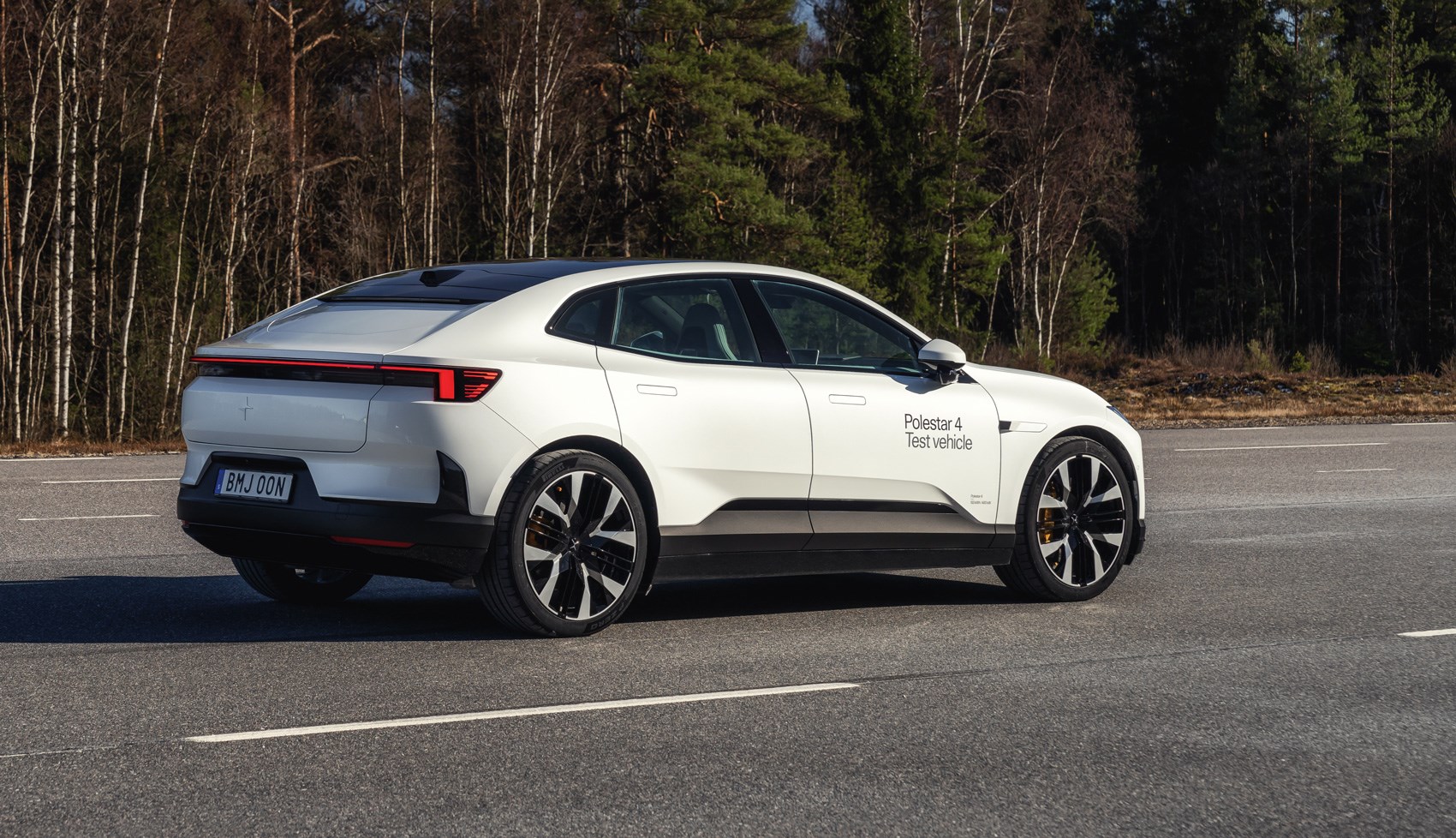
The 4 uses a 100kWh battery pack, 94kWh of which is usable, a 400-volt architecture (800-volt cars do exist on the SEA platform, and Polestar reckons an upgrade within the 4’s lifespan isn’t beyond the realms of possibility) and offers a fast-charging capacity of 200kW, 70kW down on the Macan.
None of which prepares you for your first meeting with the 4. Big, and big on presence, it manages to look a little bit like both a Polestar 2 and The Future, with its sleek, fuselage-esque body, vaguely i-Pace-esque mash-up of coupe and crossover proportions, immaculately sculpted surfaces and the complete lack of any kind of rear screen…
Oh yeah! This is the one without a back window!
It is. Designer Max Missoni wanted a coupe roofline on a package that, thanks to its underfloor battery and need for decent rear-passenger headroom, didn’t lend itself to the idea. The answer was to move the header rail back, behind second-row heads rather than above them, to create decent headroom beneath the supersonic roofline. A slightly reclined seating position also helps.
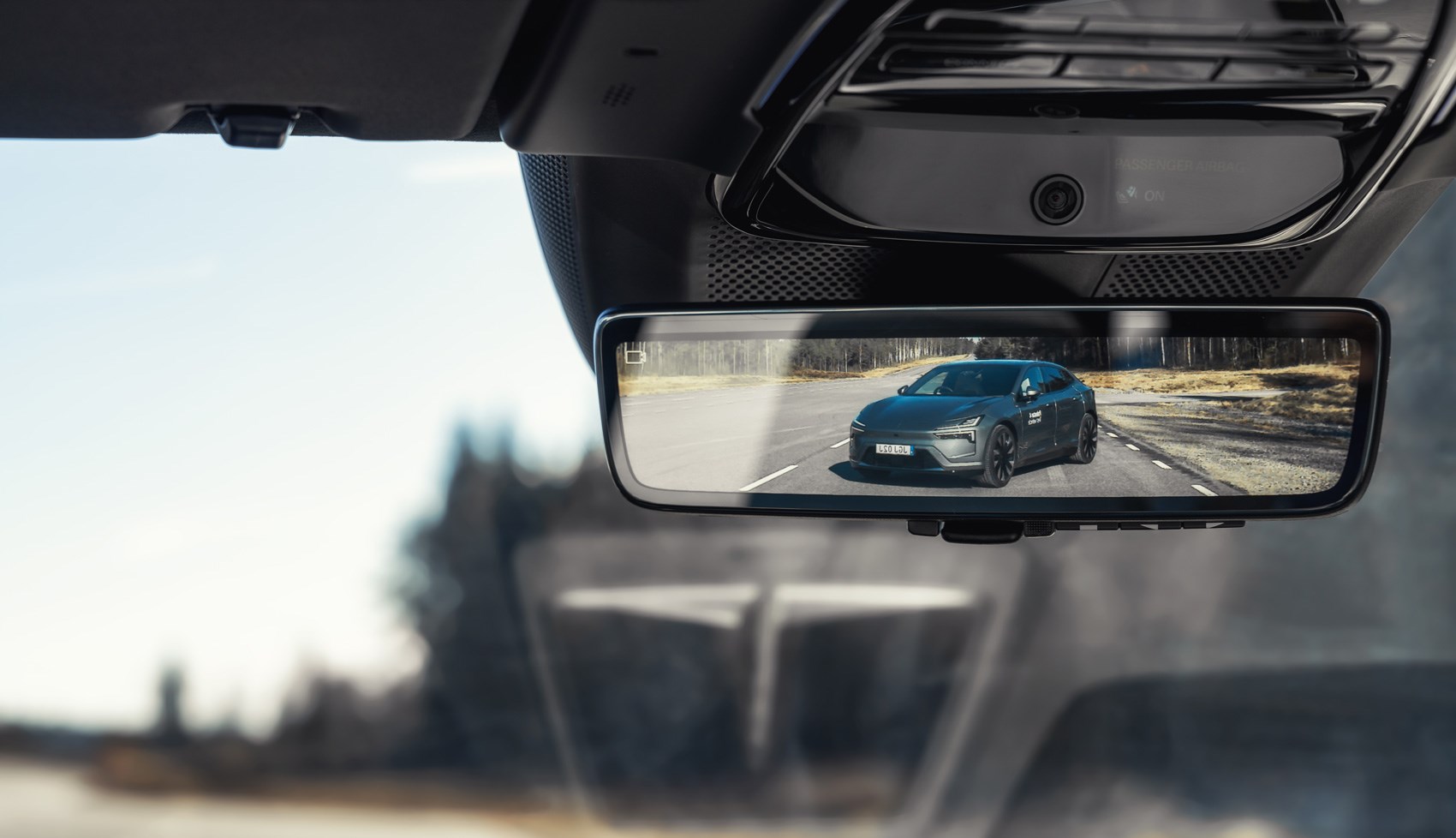
Climb into the back and it’s roomy in the extreme (as you’d hope given the 2999mm wheelbase and 4.84m overall length). Headroom is fine for six-footers; tighter if you’re taller. The interior design is quirky but gorgeous, with a neat wing motif that runs around the front of the cockpit and, mirrored, behind second-row occupants, making you feel snug and safe and happy. The vast panoramic roof can be optioned with electro-chromatic glass and, despite the lack of natural light from behind, there’s no sense of claustrophobia thanks to gentle ambient lighting (colour themes, inspired by the planets of the solar system, are nicely presented on the screen, complete with Polestar show car in space animation). The 4 is the first car to use Gentex’s next-gen digital rear-view mirror, drawing a feed from a 2.5MP camera high on the trailing edge of the roof to do what a piece of reflective glass no longer can thanks to the lack of rear glass.
Up front, Polestar’s trademark minimalism translates into a stylish, very comfortable space with none of the cramped cosiness that plagues the compromised 2. You sit in slim sports seats, a three-spoke wheel (with a neat centre marker, tellingly) and two portrait screens, a driver’s display and a bigger, portrait-orientated touchscreen. While the latter controls almost everything, there’s still a media on/off volume knob between the seats, stalks behind the wheel and shortcuts for two main functions; toggling off lane-keep assist and speed-limit warning, and to switch between the three levels of regen.
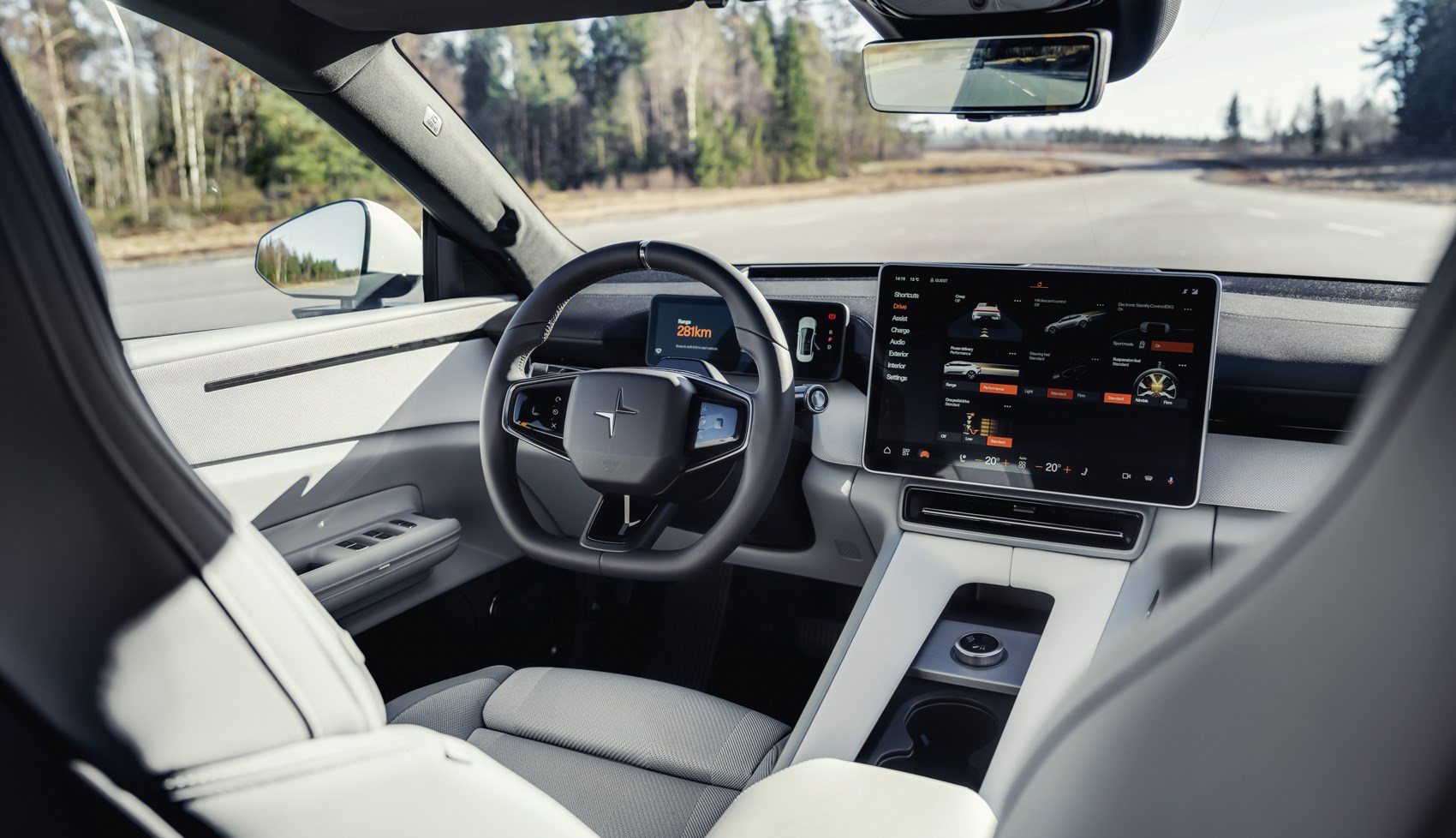
And then, just as you’re poking around the touchscreen, admiring its clean graphics and award-winning logic, over saunters the most enthusiastic man you ever met, Joakim Rydholm, Polestar’s head of chassis development. You need know only two things about Joakim. He works hard – ‘For me this is not a job, it’s a lifestyle. If you think this is work you should have given up a long time ago!’ – and he can drive. A serial national-level rally winner in a Mitsubishi Lancer Evo X, watching him slide a Single motor 4 is like watching Da Vinci doodle.
Okay, okay. But is Joakim’s car good to drive?
No. It’s better than that. Exceptional, in fact, and one of few EVs we can’t wait to drive again, just for the hell of it. In part, that’s a product of the coupe/crossover design which, like the Taycan Cross Turismo, gives you almost all the agility and performance you could want in a package with the ground clearance to tackle any road, no matter how gnarly or lumpy. And in part this is because the 4 is just incredibly well sorted.
By modern EV standards neither the Dual motor nor Single motor cars are ballistic in a straight line. Even the Dual motor’s clout is blunted by a kerbweight of circa 2.3 tonnes. But get into the interesting bits, like braking and changing direction, and the 4 begins to shine like a, well, like a pole star.
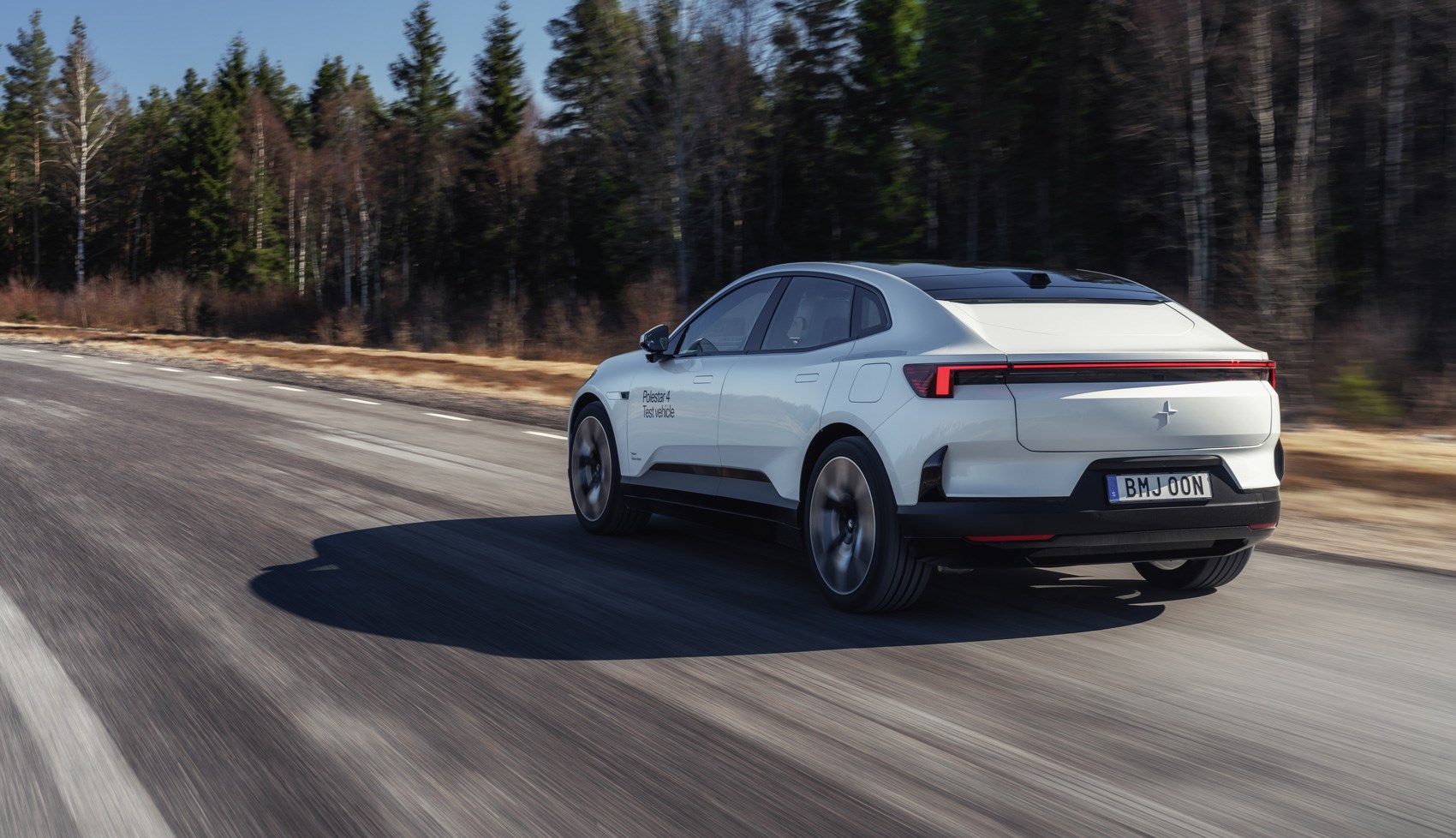
The steering is superb. There’s no slack around the dead ahead and no unwanted heft in the Standard setting (you can go lighter or heavier, but you won’t), just a gorgeous, well-oiled action laid over a base of effortless precision and intuitive linearity. Equally superb is the chassis tune, on both passive dampers in the Single motor and adaptive in the Dual motor car. The ride is controlled but pliant, with nicely supressed road noise on most surfaces, and the steering and chassis in combination are seriously impressive.
With Joakim alongside me we set about subjecting his baby to a barrage of brutal tests: tortuous handling tracks, 120mph swerves on a speed bowl, crawling over fallen tree trunks at walking pace, gliding down a remarkably convincing facsimile of a lumpen British B-road, careening through long sweepers studded with 50mm proud manhole covers… Volvo’s Hällered proving facility is a playground, but a necessarily masochistic one.
Two things shine through: the car’s exquisite, almost vice-free manners and the sublime control to its wheel movements. With the precise steering and controlled Brembo brakes you can place the car wherever you want, regardless of speed, and whatever happens next the tightness of the body control, which really is gobsmacking, leaves you scratching your head given the anti-roll bars are mechanical, passive and entirely old-school.
Through that sweeper, studded with its evil-looking drain covers, side-skip is sublimely controlled in the Dual motor car, on 22-inch wheels with performance tyres, and our trajectory barely any less resolute in the passively-damped Single motor car.
Out on the bowl the 4’s first trick is to run hard and fast halfway up the cambered wall of tarmac, its line true and uncorrupted even as we go from no throttle to full, repeatedly. With more speed, circa 120mph, we proceed to chuck the 4 across multiple lanes in a single controlled stab of steering input, the cohesive fluidity with which the entire car reacts quite something. There’s no heave, no scary yaw, no wobbles. It’s seriously impressive stuff for a big family car, helped of course by the snake’s-belly-low centre of gravity. In the 4 it sits no higher than the 2’s and lower than the super-PHEV Polestar 1’s, despite that car’s supercar silhouette (blame the archaic combustion engine in the nose, standing tall like a pub piano).
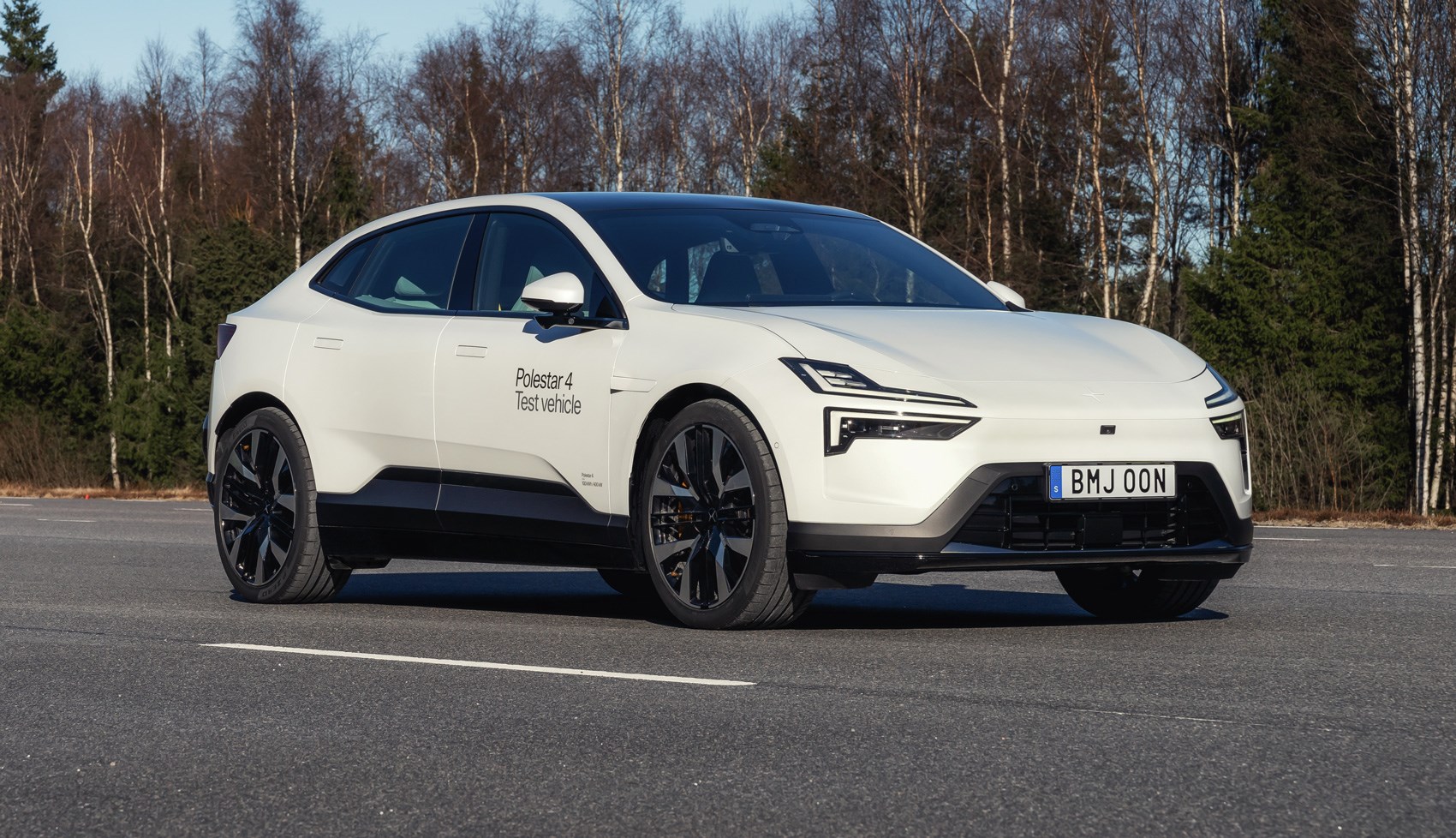
For his last trick Joakim takes the wheel, switches the ESC to Sport and sets about negotiating a tight and twisty handling track in an almost endless state of graceful oversteer, blending slide into slide like the rally freak he is. As if the Single motor car wasn’t already making a compelling case for itself, with its lower price and greater range, this performance all but confirms that the less expensive 4 is by no means the lesser car.
As he drifts, we talk. ‘The turn-in response, it’s good. It’s very easy to turn in the car. Then I accelerate, I slide a little, and I can play with it… If you tune the chassis without ESC – really tune the balance, with no electronics – this is the best way. Then you create a car that is predictable, in harmony. Then you put the stability control systems on top of this. This so important for the customer, whether they can describe what they’re feeling or not. It’s the same with the steering. They just know that they like it, that it’s fun to drive and that they get confidence from it.’
I point out the relative lack of chassis toys versus the (admittedly far more expensive) Macan Electric Turbo. ‘I get a lot of questions, like “Ah, why don’t you have that function or this function?” You can easily have too many toys and end up engineering the car only halfway. Instead, we tune the perfect car rather than having a lot of things that don’t work together – it’s about simple ingredients, well cooked. We are a small team [just six on chassis] but we have a lot of experience, we work as one solid unit and we put in the time.’ He also points out that he’s spent budget where it counts, on premium ZF dampers and Brembo brakes, diverging from the SEA components set where he felt he must.
Verdict
Stylish, spacious, beautifully crafted inside and dynamically impressive, the 4 is shaping up to be a serious contender – a kind of cool, contemporary and unapologetically Scandinavian i-Pace.
There are caveats, of course. We had no chance to test efficiency, charging speeds, comfort over distance or day-to-day usability. Some won’t like the lack of physical switches, however impressive the touchscreen interface on first contact, and those same people will likely struggle with the lack of a conventional rear-view mirror. Creators Gentex admit a little acclimatisation’s required, and certainly my eyes required more than a glance to process the digital display, unused to the set-up as they were. But the theory is sound, with real advantages including a far wider field of view, increased contrast in poor weather, LED headlamp flicker mitigation and, in the future, the ability to overlay information such as blind-spot warnings and even navigation prompts.
But for all the genre-mashing design and innovative tech and materials, it’s the 4’s more classical attributes – comfort, refinement and dynamic flair – that stay with you.